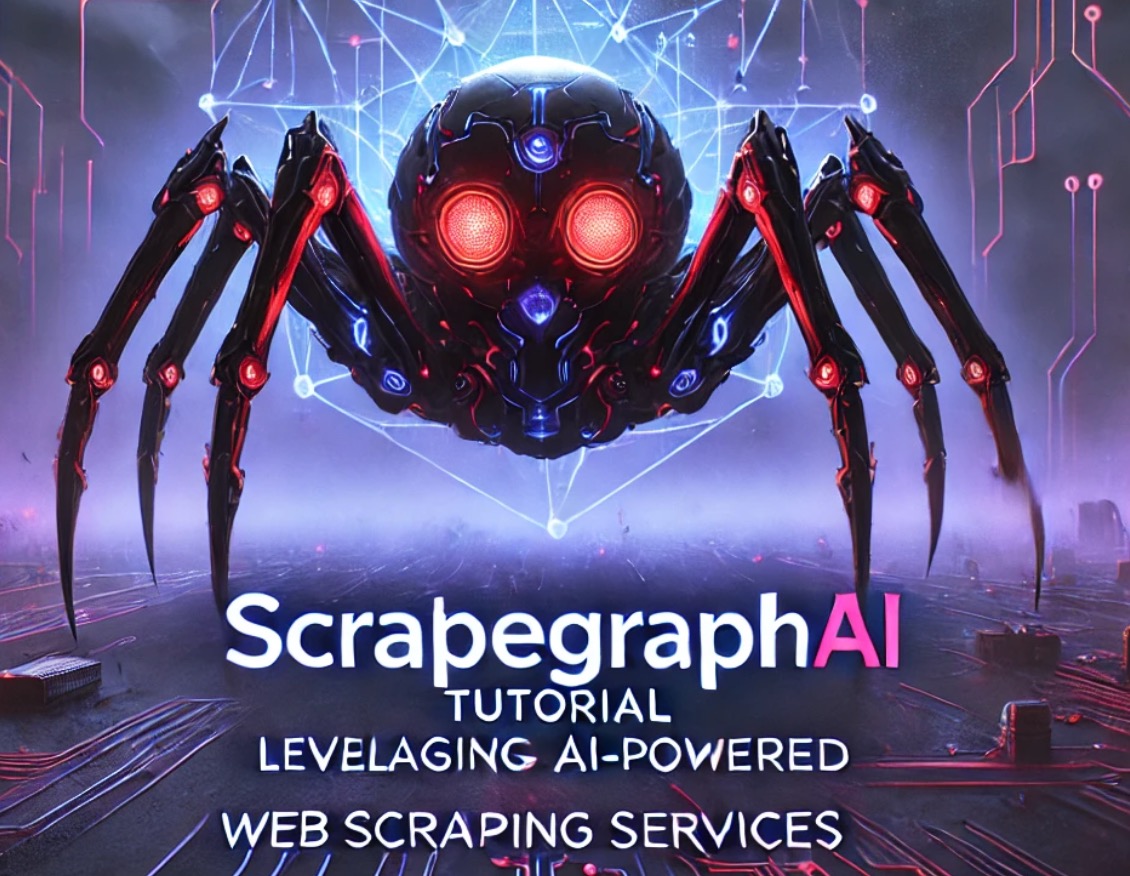ScrapeGraphAI教程

In today's data-driven world, efficient extraction and processing of web content are crucial. ScrapeGraphAI offers a suite of AI-powered services designed to simplify web scraping and content conversion tasks. In this tutorial, we'll explore three key services: SmartScraper, SearchScraper, and Markdownify, and demonstrate how to integrate them into your projects.
Prerequisites
Before we begin, ensure you have the following:
-
Python 3.7+: Download and install the latest version from the official Python website.
-
ScrapeGraphAI API Key: Sign up and obtain your API key from the ScrapeGraphAI Dashboard.
-
ScrapeGraphAI Python SDK: Install the SDK using pip:
bashpip install scrapegraph_py
SmartScraper: AI-Powered Web Data Extraction
SmartScraper intelligently extracts structured data from any website, understanding context and content like a human would.
Example: Extracting Product Information
pythonfrom scrapegraph_py import Client # Initialize the client client = Client(api_key="your-api-key") # Define the target URL and extraction prompt url = "https://example.com/product-page" prompt = "Extract the product name, price, and description." # Perform the extraction response = client.smartscraper(website_url=url, user_prompt=prompt) # Display the extracted data print(response.get('result'))
Expected Output:
json{ "product_name": "Example Product", "price": "$29.99", "description": "This is an example product description." }
In this script, we initialize the Client with our API key, specify the target URL, and define a prompt detailing the information we want to extract. The smartscraper method processes the request and returns the structured data.
SearchScraper: AI-Driven Multi-Source Information Aggregation
SearchScraper searches and aggregates information from multiple web sources, providing comprehensive answers with full source attribution.
Example: Gathering Information on a Topic
pythonfrom scrapegraph_py import Client # Initialize the client client = Client(api_key="your-api-key") # Define the search query query = "Benefits of AI in healthcare" # Perform the search and extraction response = client.searchscraper(user_prompt=query) # Display the aggregated information print(response.get('result'))
Expected Output:
json{ "summary": "AI in healthcare offers numerous benefits, including improved diagnostic accuracy, personalized treatment plans, and efficient data management.", "details": [ { "benefit": "Improved Diagnostic Accuracy", "description": "AI algorithms can analyze medical images and data to assist in accurate diagnosis." }, { "benefit": "Personalized Treatment Plans", "description": "AI helps in tailoring treatment plans based on individual patient data." }, { "benefit": "Efficient Data Management", "description": "AI streamlines the management and analysis of large volumes of healthcare data." } ], "reference_urls": [ "https://example.com/ai-healthcare-benefits", "https://example.com/ai-medical-data" ] }
Here, we use the searchscraper method to search for information on the benefits of AI in healthcare. The service returns a summary, detailed points, and reference URLs for further reading.
Markdownify: Converting Web Content to Markdown
Markdownify transforms web content into clean, well-formatted markdown, preserving the content's structure while removing unnecessary elements.
Example: Converting an Article to Markdown
pythonfrom scrapegraph_py import Client # Initialize the client client = Client(api_key="your-api-key") # Define the target URL url = "https://example.com/article" # Perform the conversion response = client.markdownify(website_url=url) # Display the markdown content print(response.get('result'))
Expected Output:
markdown# Title of the Article Introduction paragraph... ## Subheading Content under the subheading... - Bullet point 1 - Bullet point 2 > A relevant quote from the article. Conclusion paragraph...
In this example, we convert a web article into markdown format using the markdownify method. The service preserves the article's structure, including headings, lists, and blockquotes, resulting in clean and organized markdown content.
Frequently Asked Questions
What are the main features of ScrapeGraphAI?
Key features include:
- SmartScraper for intelligent data extraction
- SearchScraper for multi-source information
- Markdownify for content conversion
- AI-powered understanding
- Structured output
- Source attribution
How do I get started with ScrapeGraphAI?
Getting started involves:
- Installing Python 3.7+
- Obtaining an API key
- Installing the SDK
- Setting up your environment
- Running your first scrape
- Understanding the basics
What programming languages are supported?
Currently supported languages:
- Python
- JavaScript
- TypeScript
- cURL
- REST API
- More coming soon
How does SmartScraper work?
SmartScraper works by:
- Understanding natural language prompts
- Analyzing webpage structure
- Extracting relevant data
- Structuring the output
- Handling dynamic content
- Providing clean results
What about rate limiting and quotas?
Considerations include:
- API rate limits
- Request quotas
- Usage monitoring
- Cost optimization
- Resource management
- Scaling strategies
How do I handle errors and exceptions?
Error handling includes:
- API errors
- Network issues
- Timeout handling
- Retry mechanisms
- Error logging
- Recovery procedures
What are the best practices for using ScrapeGraphAI?
Best practices include:
- Clear prompt writing
- Proper error handling
- Rate limit respect
- Data validation
- Resource management
- Documentation
How do I optimize my scraping performance?
Optimization strategies:
- Efficient prompt writing
- Resource management
- Parallel processing
- Caching strategies
- Error handling
- Monitoring
What about data privacy and security?
Security considerations:
- API key protection
- Data encryption
- Access control
- Privacy compliance
- Secure storage
- Regular audits
How do I integrate ScrapeGraphAI with other tools?
Integration options:
- API integration
- SDK usage
- Webhook support
- Custom solutions
- Third-party tools
- Automation workflows
Conclusion
ScrapeGraphAI's suite of services—SmartScraper, SearchScraper, and Markdownify—provides powerful tools for web data extraction and content conversion. By integrating these services into your projects, you can efficiently gather, process, and transform web content to meet your specific needs.
For more detailed information and advanced usage, refer to the official ScrapeGraphAI documentation:
- SmartScraper: https://docs.scrapegraphai.com/smartscraper
- SearchScraper: https://docs.scrapegraphai.com/searchscraper
- Markdownify: https://docs.scrapegraphai.com/markdownify
Remember to handle web scraping responsibly by adhering to website terms of service and legal considerations.
Did you find this article helpful?
Share it with your network!